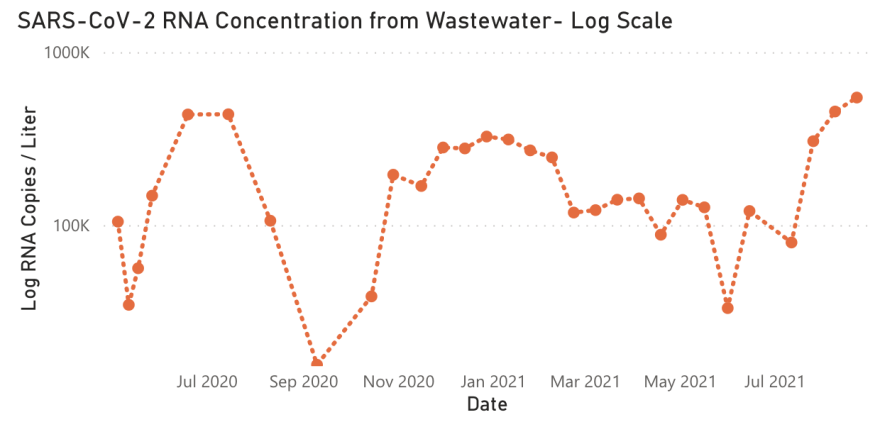Capturing wastewater samples in a local sewage system is one way to study the spread of COVID-19. Updated findings from a treatment facility in Jupiter may shed light on just how much of the virus is in the community.
The Loxahatchee River Environmental Control District teamed up with the research lab Biobot to monitor COVID-19 in the region’s wastewater.
Bud Howard, the district's director of information services, says they’ve been taking samples every two weeks.
The wastewater surveillance "helps scientists and public health officials better understand the overall trends of COVID-19," which is moving upwards.
Howard spoke with WLRN's Wilkine Brutus about the latest findings.
The following conversation has been edited for length and clarity.
WLRN: You have some new findings from your recent wastewater tests. What were the results and are you seeing an increase of it?
HOWARD: The short answer is our results show an increase in the raw concentration of virus fragments in our wastewater. And so if you look at the specific numbers, it's about a 20 percent increase. But the important thing to understand here is that Biobot provides us with two different numbers. One of them is the raw virus concentration in the wastewater, and the other one is what they call a normalized virus concentration, where they look at the amount of fecal material and then adjust the concentration of the virus relative to the concentration of the fecal material.
And I think the take-home message on this is, it's important — and this is the guidance that we get from Biobot scientists as well as the scientific community at large on this type of monitoring, is that there's many factors that can affect these values — and so it's important not to get too focused on the specific numbers with regard to subtle changes, but it's the larger swings in data and the trends that are very important.
There's a lot of virus in the wastewater and so therefore in our community.
Obviously, there are several nuances when you're looking at data. Are you concerned with this new data that came out recently?
Definitely. I mean, I think the disappointing part for all of us is that these values show a lot of virus in our community. And because people shed so much virus very early on in the infection, they may not even realize they have recovered. Yet our bodies are shedding hundreds of thousands, millions of these virus fragments each time we go to the bathroom.
And so therefore, five days, if I start to feel badly, I have already been been shedding lots and lots of virus. I think the most compelling part of this data is that we're seeing a peek into the future into what's coming. So we know that there's going to be a continued situation where we've got lots of people in our community that have COVID.
[Does] this wastewater surveillance of COVID at a treatment plant, capture homes on a septic system?
No. The homes that are served by a septic system, that wastewater actually ends up going out through their septic system and into a drain filled field and then percolates into the ground. This type of monitoring is is more effective in a central sewer system where the wastewater that leaves our homes and businesses goes through a network of pipes and then comes to a wastewater treatment facility. And that's the case we have here.
We serve Jupiter, Tequesta and parts of Juno Beach. And so kind of the northern Palm Beach County area.
The CDC says wastewater surveillance of COVID is a developing field. How useful is this new data in terms of public health decisions and actions?
It's important to understand that there's different types of wastewater systems where in other parts of the country, rainwater that flows off your street may actually go to the wastewater treatment plant. But in Florida, because we get so much rain, those are separate systems. Our stormwater system that manages the rainfall is separate from our wastewater system that captures the wastewater coming out of our homes and businesses.
So in our case, this is really good information, although I think that helps shed some light on some of the variability. If we get a really big rain event, while our system isn't perfect, some water can seep in through manhole covers and things like that and cause some additional dilution.
It's important not to just study the numbers and say, "Oh, there was a six and a half percent increase in the numbers on this sampling of more." It's like, that number is really high and we need to we need to be aware that there's still a lot of COVID in our community.
Copyright 2021 WLRN 91.3 FM. To see more, visit WLRN 91.3 FM.



